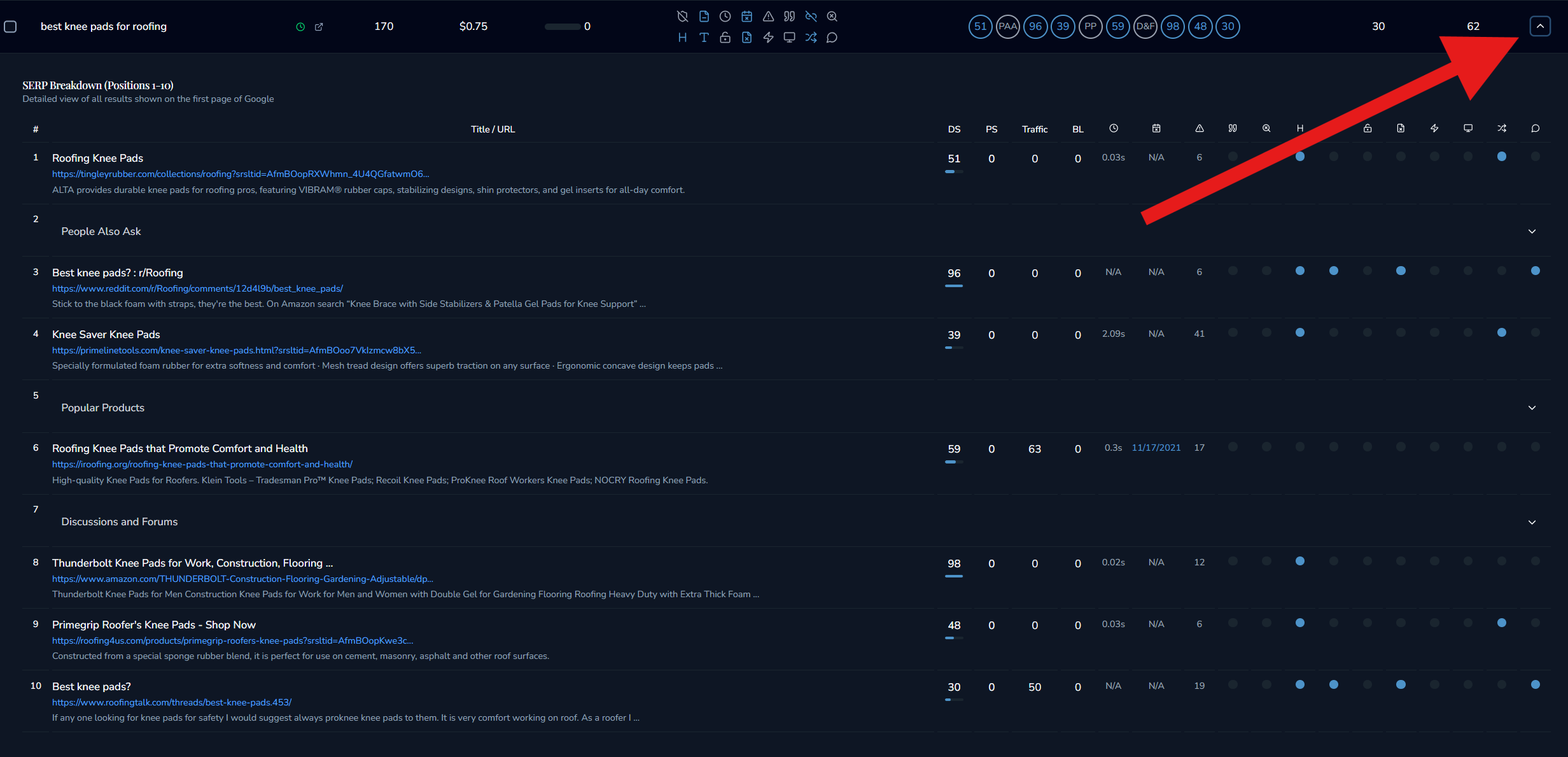Learn how to run your first SERP analysis with ClearSERP and understand the comprehensive data you'll receive. This guide covers the complete workflow from setup to interpreting results.
Starting Your Analysis
Step 1: Enter Your Keywords
Begin by entering your keywords in the main text area, one keyword per line. You can analyze between 1 and 1,000 keywords in a single run.
Pro Tips for Keyword Entry
- • Use
Ctrl + Enterto quickly start analysis - • The keyword counter shows your current count (max 1,000)
- • Keywords can be imported from research results
- • Analysis uses smart pricing: 30 credits for 1 keyword, more efficient for larger batches
Step 2: Configure Analysis Settings
Click the Settings button to configure your analysis parameters:
- Language: Choose from 50+ supported languages for localized results
- Location: Select target country for geographically relevant SERPs
These settings ensure your analysis matches your target market and user base.
Step 3: Start Analysis
Click Analyze Keywords to begin. The button shows the exact credit cost before you start. Your analysis runs in the background, so you can safely navigate away and return later.
Analysis Process
ClearSERP performs multiple data collection steps for each keyword:
- Fetches top 10 Google search results
- Analyzes SERP features and layouts
- Calculates keyword difficulty scores
- Retrieves search volume and CPC data
- Measures Domain Score (authority) for organic results
- Detects SERP weaknesses and opportunities
Understanding Your Results
Once complete, your analysis provides comprehensive data for strategic keyword targeting decisions.
Results Table Overview
The results table contains the following key columns:
- Keyword: The search term analyzed
- SV: Monthly search volume for this keyword
- CPC: Cost per click for paid ads
- Difficulty: Keyword difficulty score (0-100)
- SERP Weaknesses: Potential weaknesses in the SERP (blue icons indicate presence)
- SERPs: Top 10 search results with Domain Scores and SERP features
- Lowest DS: Lowest Domain Score in top 10 results
- KS: KeywordScore based on Domain Scores, SERP Weaknesses, and keyword difficulty
KeywordScore Explained
The KeywordScore (KS) is ClearSERP's proprietary ranking opportunity metric. Higher scores indicate better ranking opportunities based on:
- Domain Score (authority): Lower domain scores in top results mean easier competition
- SERP Weaknesses: More weaknesses indicate ranking opportunities
- Keyword Difficulty: Lower difficulty scores are factored favorably
SERP Weaknesses Analysis
ClearSERP detects 16 different types of SERP weaknesses that indicate ranking opportunities:
Complete List of Detected Weaknesses
Domain & Authority:
- • Low Domain Score
- • Low Page Score
- • No Backlinks
Technical SEO:
- • Slow Page Speed
- • High Spam Score
- • Non-HTTPS Page
- • Broken Page
- • Flash Code on Page
- • Frames on Page
- • Non-Canonical
Content Quality:
- • Old Content
- • Title-Content Mismatch
- • Keyword Not in Headings
- • No Heading Tags
- • Unmatched Intent
SERP Composition:
- • UGC-Heavy Results
SERP Visualization
The SERPs column shows a visual representation of search results:
- Blue circles: Organic results with Domain Scores displayed
- Gray circles: SERP features (People Also Ask, Featured Snippets, etc.)
- Position numbers: Ranking positions 1-10
This visualization helps you quickly identify the competitive landscape and SERP layout.
Advanced Features
Expanding Keyword Details
Click the Details button on any keyword row to view:
- Complete SERP breakdown with full titles and URLs
- Detailed weakness analysis for each result
- Domain Score (authority) and Page Score (authority) scores
- Technical performance metrics

Filtering and Sorting
Use the advanced filtering system to find specific opportunities:
Available Filter Categories:
- Data Filters: Search volume, CPC, difficulty, domain scores
- Content Filters: Keywords in titles, descriptions, or URLs
- SERP Features: Filter by presence of specific SERP elements
- Weaknesses: Filter by specific weakness types
Filters support both inclusion and exclusion modes, plus "any" or "all" matching for multi-select filters.
Saving and Exporting Results
Once you've found valuable keywords:
- Select keywords: Use checkboxes to select individual keywords or entire pages
- Save to collections: Organize keywords into named collections for future reference
- Export data: Download complete results as CSV for external analysis
- Copy keywords: Copy selected keywords to clipboard for quick use
Analysis History
All your analyses are automatically saved and accessible via View History. You can:
- Return to any previous analysis
- Compare results across different time periods
- Re-analyze keywords to track SERP changes
- Export historical data
Next Steps
After your first analysis:
- Review the Key Concepts guide to understand all metrics
- Explore the weakness detection thresholds in settings
- Try the keyword research features to discover new opportunities
- Set up saved collections to organize your keyword strategy
Ready to start analyzing?
Start with a small set of 5-10 keywords to familiarize yourself with the interface and results format.
Start Your First Analysis